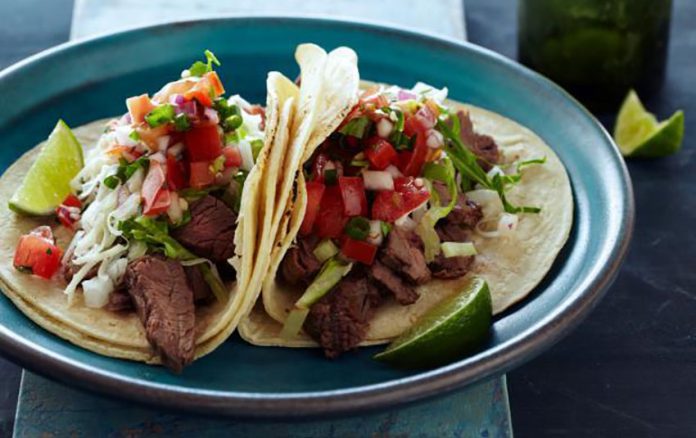What’s green on the outside, orange on the inside and deliciously sweet and juicy?
The answer, my friends, is oranges grown in tropical climates.
A reader’s question last week prompted me to look into this. I’d seen green oranges too, year after year, and just assumed it had something to do with the weather. I didn’t give it a second thought because they were still sweet, and orange inside.
In Mazatlán, Kari noticed her favorite orange juice vendor was charging 5 pesos more for juice from green oranges. He said people think they have more vitamins.
“What’s the difference?” she wrote. “And why are there only green oranges in the market now?”
![]()
A bit of research found that climate is indeed the reason. Turns out oranges develop chlorophyll as they mature on the tree. Then cool temperatures cause the chlorophyll to die off, turning the skins orange. But a sudden rise in temperature can turn them green, sometimes overnight. Especially near the equator, where temps are consistently high, ripe oranges are commonly green. Ethylene gas can be used to turn the green skin orange, but that’s not customary for fruit sold in Mexico, where most oranges are regionally grown.
Although Mexico is one of the top producers of oranges in the world, drought and high temps have wreaked havoc on the 2019-2020 crop, cutting it by almost half to the lowest levels since the 1990s. Expect to see higher prices and less availability, and mostly green skin.
While oranges are grown all over the world, they’re a domesticated fruit, a deliberate (or accidental) hybrid of the mandarin and pomelo, first referenced in China in 314 BC. Sweet oranges spread to Europe via Portuguese traders in the 1500s, and then on to Mexico and South America.
Interestingly, the word for the color “orange” comes from the name of the fruit, a derivative of the Old Provencal auranja, based on Arabic nāranj. (It’s easy to see where the Spanish word naranja comes from.) Old French turned that into une norenge, and if you merge the “n” sounds, you end up with the English “orange.” Some languages “credit” those Portuguese merchants for the fruit’s name: the Albanian portokall, Neapolitan portogallo, Greek portokali.
This week’s recipes focus on the common sweet orange; I chose not to include bitter or Seville oranges, used in marmalade. Another interesting variety is the bergamot orange, a hybrid of bitter orange and lemon, whose peel is used for perfumes and — yes!—to flavor Earl Grey tea.
Carne Asada Tradiciónal
Every family has its own recipe for this classic Mexican dish, but here’s a basic one to get you started.
- 3 cups fresh orange juice, or more as needed
- 2 Tbsp. finely chopped fresh cilantro
- 2 Tbsp. freshly squeezed lime juice
- 1 tsp. (or more) minced garlic
- 1 tsp. salt
- 1 tsp. ground black pepper
- 1 tsp. ground cumin
- 3 lbs. trimmed skirt or flank steaks (arrachera)
- 16 corn tortillas, or as needed
- Toppings: onion, cilantro, salsa Mexicana
To make marinade, combine orange juice, 2 Tbsp. cilantro, lime juice, garlic, salt, pepper and cumin in a large zip-lock freezer bag. Place steaks in the bag and seal, squeezing out as much air as possible. Refrigerate at least 1 and up to 8 hours.
Preheat grill to medium-high. Cook steaks to preferred doneness, 6-8 minutes per side. Remove from grill and slice as thinly as possible against the grain. Heat corn tortillas, add steak and toppings and enjoy.
Orange Dipping Sauce
An easy and irresistible sauce for coconut shrimp or chicken fingers, or for making classic Orange Chicken over rice.
- Zest of 1 orange
- 1/2 cup fresh orange juice
- 2 Tbsp. fresh lime juice
- 2 cloves garlic, minced (or more)
- ½ tsp. salt
- 1 tsp. grated fresh ginger (or more)
- 2 Tbsp. honey
- Optional: 1 Tbsp. cornstarch, 1 tsp. crushed red pepper, sesame seeds, chopped green onions

Combine zest, both juices, garlic, salt, ginger and red pepper, if using. If using cornstarch, remove 2 Tbsp. of juice mixture and whisk in cornstarch until combined thoroughly. In small pan, bring remaining juice mixture to a boil over medium heat; add honey. Stir in cornstarch mixture. Boil for 1 minute, stirring constantly until thickened. For Orange Chicken, garnish cooked chicken with sesame seeds and green onions. –marthastewart.com
Stovetop Candied Yams
These are usually baked in the oven; here’s an easier, quicker way.
- 3 lbs. sweet potatoes (yams), peeled and cut into 2-inch chunks
- Salt
- 2 cups fresh orange juice
- 1¼ cups brown sugar
- ½ tsp. ground ginger
- ½ tsp. cinnamon
- 4 Tbsp. butter
Boil sweet potatoes in salted water about 10 min till fork-tender. Drain and set aside. Mix remaining ingredients in a shallow, wide sauté pan and bring to a boil on high heat. Add sweet potatoes and cook on high heat until sauce reduces to a syrup, about 10 minutes.
Crispy Honey-Orange Glazed Salmon
- 1 Tbsp. olive oil OR 2 tsp. butter
- 4 (6-oz.) salmon filets
- ¼ cup fresh orange juice
- 3 Tbsp. honey
- 2 Tbsp. soy sauce
- 4 cloves garlic, crushed or minced
- Salt & pepper to taste
- Optional: ½ tsp. red pepper flakes
If cooking fish on stovetop, heat butter or oil in a skillet over medium-high heat. Sear salmon skin-side up for 3-4 minutes. from pan and cover with foil. If using grill, place salmon skin-side down and cook over high heat for 6-8 minutes. Flip carefully with spatula and cook another 2-3 minutes till done.
In small skillet, cook orange juice on high heat until reduced to about half (it takes about 1 minute to reduce down if your pan is hot enough). Add garlic, then honey, soy sauce and red pepper flakes if using, stirring constantly to combine well. Simmer about 1 minute till reduced to a syrup. Carefully place salmon back in pan with sauce, skin-side up, and sauté for 2-3 minutes till cooked through. Serve immediately.
Janet Blaser has been a writer, editor and storyteller her entire life and feels fortunate to be able to write about great food, amazing places, fascinating people and unique events. Her first book, Why We Left: An Anthology of American Women Expats, is available on Amazon. Contact Janet or read her blog at whyweleftamerica.com.
